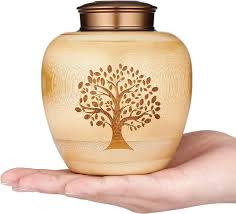A Comprehensive Guide to Creating a Meaningful Memorial
When we lose a loved one, it becomes essential to honor their memory in a way that reflects their life, values, and the impact they had on those around them. A meaningful memorial serves as a lasting tribute, providing solace and a place for reflection. In this guide, we explore how to create a memorial that genuinely celebrates the life of the deceased, offering comfort to those who remain.
Understanding the Purpose of a Memorial
A memorial serves several purposes. It is a physical or symbolic representation of the deceased, helping to keep their memory alive. It provides a place for loved ones to gather, reflect, and find comfort. Moreover, it can be a celebration of life, capturing the essence of the individual and the unique legacy they left behind.
Key Elements of a Meaningful Memorial
Personalization: The memorial should reflect the personality, interests, and beliefs of the deceased. This can be achieved through customized designs, inscriptions, and even the choice of materials.
Symbolism: Incorporating symbols that hold significance to the deceased or their loved ones can add depth to the memorial. These might include religious symbols, nature motifs, or other meaningful icons.
Location: Choosing an appropriate location is crucial. Whether it’s a cemetery, a garden, or a special place the deceased loved, the setting should be peaceful and accessible to family and friends.
Types of Memorials
There are various types of memorials, each offering different ways to honor a loved one. The choice depends on personal preferences, cultural practices, and the wishes of the deceased.
Traditional Monuments
Traditional monuments, such as headstones or plaques, remain popular for their timeless appeal. These can be customized with inscriptions, engravings, and designs that reflect the life of the person they honor.
Cremation Memorials
With the increasing preference for cremation, there are now numerous options for cremation memorials. These include Urns for human ashes, cremation jewelry, and even biodegradable options that allow the ashes to be returned to the earth in a meaningful way.
Living Memorials
Living memorials are a beautiful way to celebrate life. This might involve planting a tree, creating a garden, or establishing a fund in the deceased’s name. These memorials grow and flourish over time, symbolizing the enduring nature of love and memory.
Memorial Services and Celebrations of Life
In addition to physical memorials, many families choose to hold a memorial service or a celebration of life. These events offer an opportunity to gather, share memories, and pay tribute to the deceased in a more personalized and often uplifting way.
Planning a Memorial Service
Planning a memorial service requires thoughtful consideration and coordination. Here are the key steps:
1. Choose the Date and Location
Select a date and location that works for the majority of attendees. The location could be a place of worship, a community hall, or even a favorite outdoor spot.
2. Create a Program
The program should include readings, music, and tributes that reflect the personality and beliefs of the deceased. Involving family and friends in the planning process can help ensure the service is meaningful and inclusive.
3. Select Music and Readings
Music and readings are powerful elements of a memorial service. Choose pieces that were significant to the deceased or that capture the feelings of loss, love, and remembrance.
4. Arrange for Eulogies and Tributes
Invite close family members and friends to share their memories and tributes. This personal touch adds depth and warmth to the service, making it a truly heartfelt occasion.
Memorialization After the Service
The memorialization process doesn’t end with the service. There are many ways to continue honoring a loved one’s memory.
Creating a Digital Memorial
Digital memorials, such as websites or social media pages, offer a space where family and friends can share memories, photos, and messages. These platforms can be updated over time, providing a lasting tribute.
Ongoing Acts of Remembrance
Ongoing acts of remembrance might include annual events, donations to charities in the deceased’s name, or even small personal rituals that keep their memory alive.

%20(1).jpeg)


Comments
Post a Comment